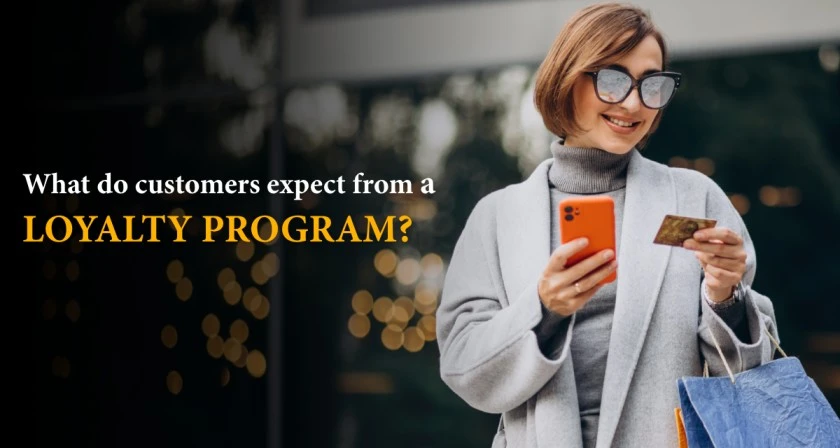Getting the attention of your customer is becoming harder for marketers. But what’s even harder than getting attention?
Loyal Customers.
Customers have found new ways to engage & build connections with brands. Hence, customer behavior is changing, and businesses need to cope. The best way to improve the loyalty program performance is to monitor it continuously.
And the best time to check is NOW!
April is referred to as “Customer Loyalty Month.” This makes it the best time to reflect on what customers expect from a loyalty program.
Do you know why your customers are leaving or why they approach your competitors? If you do not have information about your customers, you might be missing out on how to retain them.
But what does a loyal customer expect from a brand? What if they are looking for more than just discounts and rewards? Many businesses assume that providing discounts and offers will do wonders. But loyal customers demand more.
There are many factors contributing to a seamless customer experience.
What Do Customers Expect From a Loyalty Program?
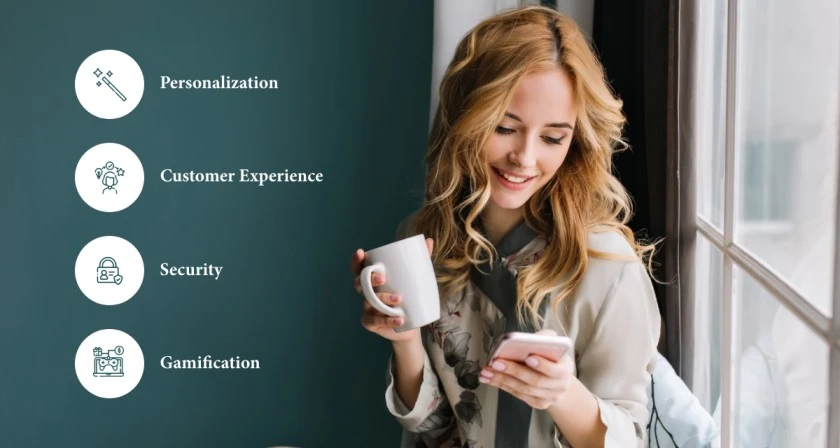
1. Personalization:
Today, customers get personalized notifications for different aspects. With the help of data-driven loyalty programs, brands are creating a customized experience for customers.
The average US household is part of close to 15 loyalty programs. But the user is completely inactive in more than 8 of them. Failing to appeal personally to the customer is demeaning the loyalty program efforts.
Loyalty programs like the Nike+ membership program have an app that delivers a highly personalized experience for customers.
As stated by Len Covello, “Loyalty & personalization are the two sides of the same coin.” To build a customer-centric loyalty program, it’s crucial to equip it with data that delivers personalization.
DSW’s loyalty program is an excellent example of hyper-personalization. DSW keeps customers regularly updated on the status of loyalty points. In addition, a personalization quiz is designed to help users find what they want and how they can get it through rewards.
2. Customer Experience:
Any customer participating in a brands loyalty program expects a seamless experience. Around 74% of customers say that their willingness to be loyal to brands depends on their experience with loyalty programs.
A great customer experience begins with the “Simplicity” and “Easiness” of engaging with programs.
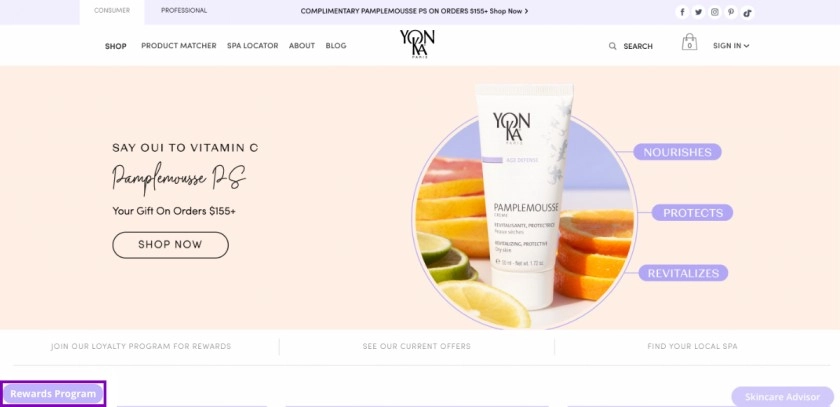
Here, you can see that it’s super easy for customers to find rewards programs. The Yonka Paris website has a launcher option that is static. Users can check the rewards program in just a click.
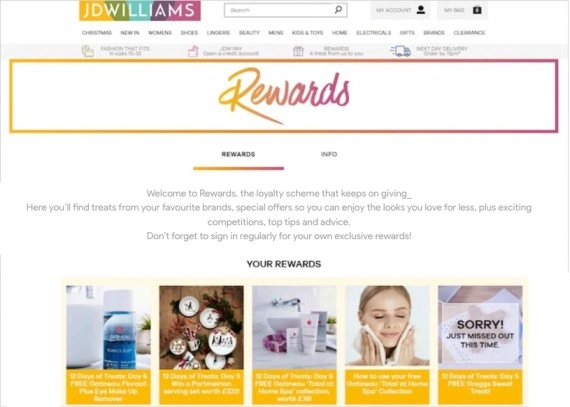
In just a click, visitors can see all the rewards in one place along with an option to login. It encourages customers to join the program with rewards appearing right in front of them.
Once the customer has become a part of the program, the next steps should be communicated through a tour or a set of instructions sent to their email.
For example, instead of sending a guide or eBook about how to get the benefits of a loyalty program, brands are sending videos with a complete tour to users. Having a FAQ section with popular queries answers is another addition to a better customer experience.
Delivering a 360-degree loyalty program experience has become essential for brands to succeed.
3. Security:
With the advent of AI & ML, brands have unlocked incredible power to understand customer behavior. The core of this is data of users. Delivering a personalized experience or creating user profiles depends on how the customer data is used.
When it comes to data sharing, customers are becoming sensitive and careful. Only 38% of customers are willing to share their phone numbers with brands. For loyalty programs, the user’s birthday is a significant event. Yet only 56% of users are willing to share it with their favorite brand.
Developing trust with customers regarding the security of their details, browsing data, and activity has become a critical factor. Generally, all loyalty programs demand more personal customer data for implementing their rewards system.
Although customers are becoming privacy-conscious, they share their data-
- when they receive a premium service from the brand
- when they have complete information about how their data is going to be used
- when they trust the brand about keeping their information confidential and safe
Communicating with customers about the security of data is one step to developing trust in this relationship. Frequent reminders about changing their password, tracking their login activity, and the power to delete data anytime boost the trust score.
4. Gamification :
Gamification brings excitement to loyalty programs. To accelerate the customers actions and repeat purchases, brands use the gamification element to reap benefits. Here are the top 3 ways through which gamification can boost customer loyalty:
- Understand customer’s needs and deliver meaningful value to them:
Monetary rewards and discounts may not sound appealing to all customers. Personalized rewards are the key to offering rewards loved by customers. - Use multiple tiers in your loyalty program:
Rewarding customers after they perform certain actions, this excites them to repeat these actions more often. Milestones and progress bars make the process exciting. Multiple tiers ensure that customers feel valued after spending more time on your platform. - Use Stories and social to let customers feel special:
People love sharing on social media. Use API-driven loyalty programs which can track users’ activity on different platforms. Let users share their achievements in your loyalty program on social media. Users get a sense of social acknowledgment while your loyalty program gets more attention and reach.
Gamification in loyalty programs is one way to accelerate the repeat purchases and actions taken by users.
Customers are getting accustomed to gaming and digital interactions. Hence, this offers a new medium through which brands can entice more customers to be part of loyalty programs.
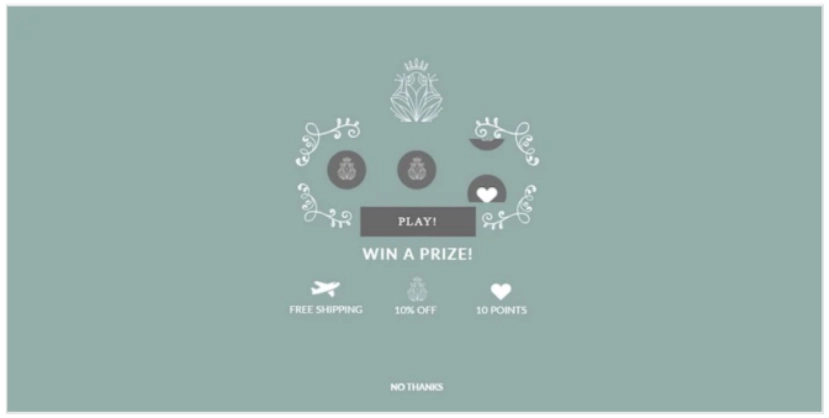
Gamification aims to form user habits of interacting with brands and indulging in shopping experiences more frequently.
It begins with incentivizing the actions users can take. For example, assigning users badges after completing the task is also one form of gamification.
But, over the years, gamification has evolved into an enhanced experience for customers. Prize wheel, rewards calendar, prize calendar, and gamified quizzes are modern gamification methods.
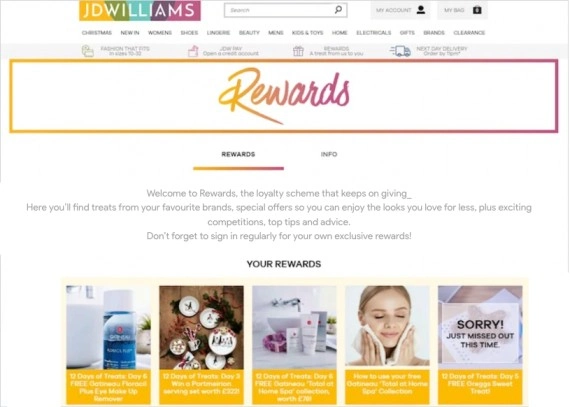
The prize wheel allows you to show exclusive rewards for users, while the rewards calendar is made for seasonal offers. Quizzes are highly interactive, and users love to participate and expect tips.
One example is United Airlines program stealth promotions. With data, United Airlines identified customers who were traveling less. Then, they curated an offer of “earning extra miles with United Airlines” if they completed specific actions. A non-frequent flier was given an opportunity to earn extra points on booking a flight. Based on previous flight history of customers, the offers were sent to people with less travel history.
5. Rewards
Finally, rewards come under the basic expectations of users from a loyalty program. The core reason behind a customer joining your loyalty program is expecting rewards in return.
But your customer is also part of other loyalty programs. Their expectations get influenced and evolve. The process of offering meaningful rewards for the customer is challenging. Brands need to understand that different customers value the same rewards differently.
All customers are not equal in terms of their expectations. For example, for some customers, a training session from an influencer is more valued than discounts. Creating a tier-based program that offers multiple rewards is one way to deal with various customer expectations.
Therefore, many brands offer coupons and subscriptions for various services customers may like. Expedia offering spa coupons to their customers is one example that resulted in good returns. A combination of different type of rewards is critical to make the rewards program successful. Including personalized and experiential rewards has now become critical for the success of a loyalty program.
Customer loyalty is a long-term commitment!
We discussed evolving customer expectations. It only proves that loyalty is not a short-term game. Every day should be considered crucial for building your loyal community. What differentiates you from your competitors is your ability to deploy relevant strategies and offers to appeal to your customers. A top-rated loyalty platform with a modern technology platform, data analytics, and strategic consultation can be a game-changer when it comes to fostering the long-term loyalty of your customers. Zinrelo is the customer data platform for loyalty and is empowering brands globally to launch highly optimized and meaningful loyalty programs.
